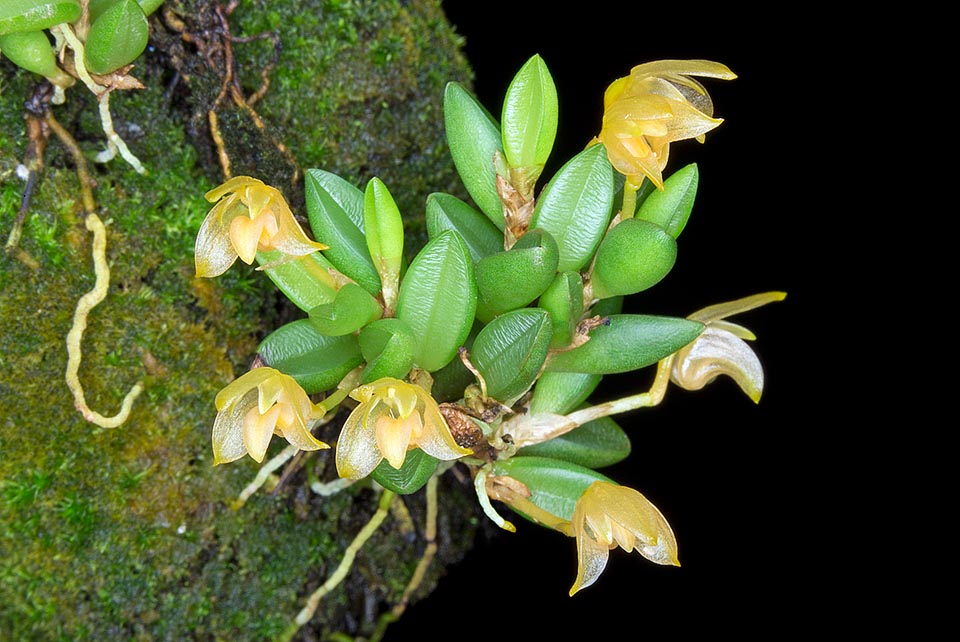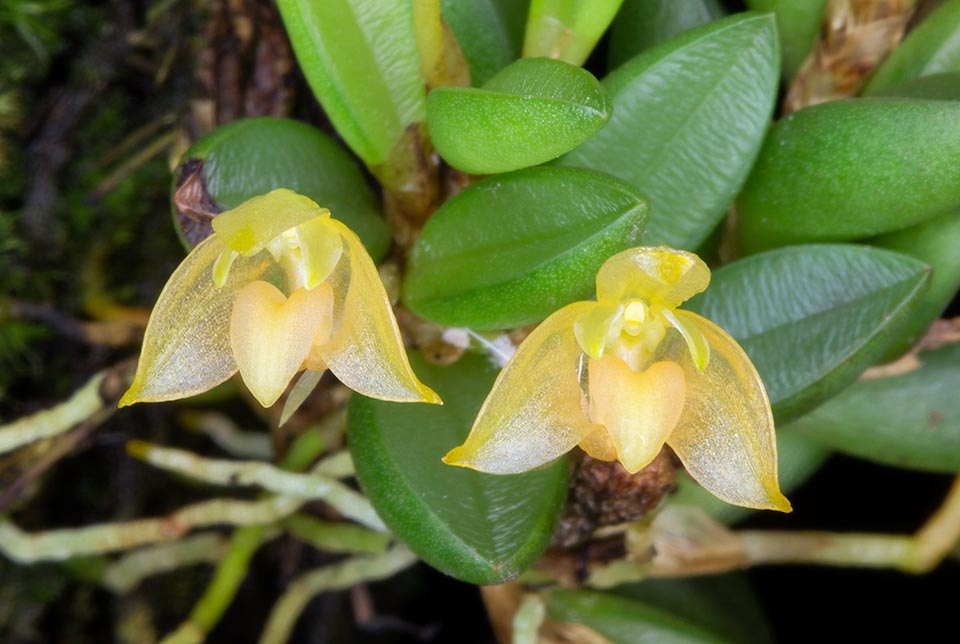Family : Orchidaceae

Text © Pietro Puccio

English translation by Mario Beltramini
The species is native to Borneo, Java, Lesser Sunda Islands, Peninsular Malaysia, Philippines, Sulawesi, Sumatra and Thailand where it grows on the trees of the humid forests between the 400 and the 2700 m of altitude.
The name of the genus is the combination of the Greek substantives “βολβός” (bolbos) = bulb and “φύλλον” (phyllon) = leaf, with reference to the leaves that grow at the apex of the pseudobulbs; the name of the species is the Latin adjective “mutabilis, e” = changeable, variable due to the colour of the flowers that changes from greenish to orange.
The Bulbophyllum mutabile (Blume) Lindl. (1830) is a rather variable epiphytic species with tendentially erect rhizome, ramified, and pseudobulbs, spaced of 1-2 cm, cylindrical, 0,6 cm long, provided at the apex of only one elliptical leaf with acute to obtuse apex, 1,2-3 cm long and 0,6-0,7 cm broad, of pale green colour and fleshy.

Native to South-East Asia, Bulbophyllum mutabile is an epiphyte with variable look due to the colour of the flowers changing from greenish to orange © Giuseppe Mazza
It reproduces by seed, in vitro, and division, with each section provided of at least 3-4 pseudobulbs.
Miniature orchid diffused in a vast area of South-East Asia, but little present in cultivation, requires a partial shade, intermediate temperatures, 18-30 °C, with lowest winter night values over the 14 °C, high humidity, 70-80%, and constant light ventilation. Frequent waterings and nebulizations during the growth of the pseudobulbs, slightly more spaced during the vegetative rest in order to allow the substratum to partially dry up.

Miniature orchid spread in nature, but little present in cultivation. The leaves, used by natives as febrifuge, reach a maximum of 3 cm and the flowers 1 cm of diameter © Giuseppe Mazza
The decoction of the leaves is utilized by some Indonesian native populations as febrifuge.
The species is reported in the appendix II of the CITES (species whose trade is internationally ruled).
Synonyms: Diphyes mutabilis Blume (1825); Dendrobium brachypetalum Lindl. (1858); Callista brachypetala (Lindl.) Kuntze (1891); Phyllorkis mutabilis (Blume) Kuntze (1891); Bulbophyllum altispex Ridl. (1894); Bulbophyllum mutabile var. ceratostyloides Schltr. (1911); Bulbophyllum illudens Ridl. (1917); Bulbophyllum ceratostyloides (Schltr.) Schltr. (1925); Bulbophyllum semipellucidum J.J.Sm. (1928); Bulbophyllum pokapindjangense J.J.Sm. (1933); Bulbophyllum mutabile var. obesum J.J.Sm. (1991).
→ For general notions about ORCHIDACEAE please click here.
